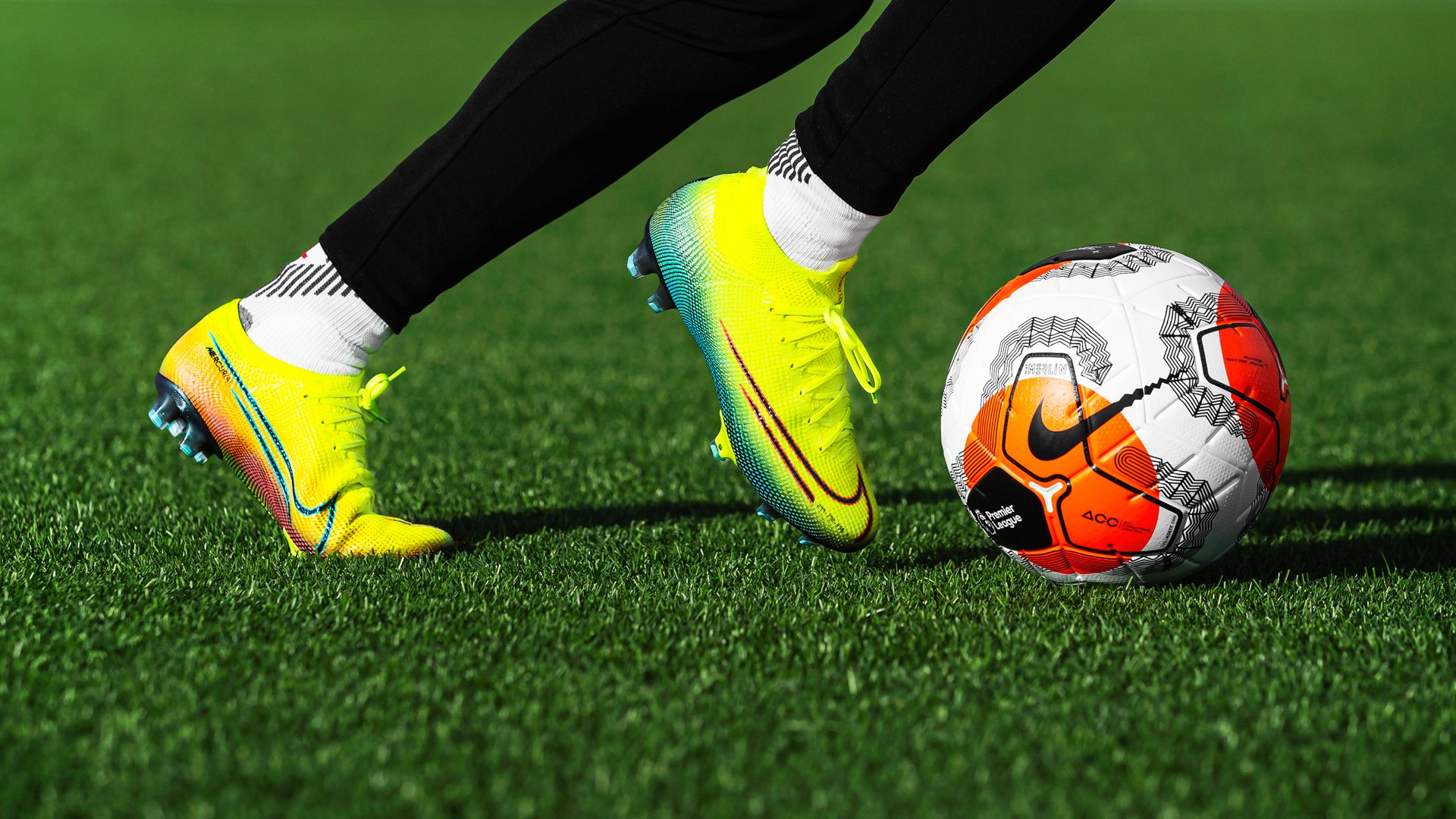Are you a footballer who’s suffered an ACL injury, but not sure why rehabilitation is so important?
Discover the critical role of ACL rehab in maximizing your performance on the field, and the potential consequences of neglecting it.
Being a football player, what do you think the most important physical component of this game is?
To me, it is the swiftness, the speed, the leg strength, core and agility.
Although strong mental presence is a crucial factor, it is of no use if you are not fast.
Don’t you agree with me?
I’m sure you do.
Like every other football player, you know the importance of running (forward, backward or sideways), changing direction, jumping, and tackling in this game.
All of these motions are performed by your lower limbs (or legs), and that’s why you need enough strength and endurance in your leg and thigh muscles if you want to be the best.
Out of the three main joints in your lower limb (hip, knee and ankle joint), the knee joint bears most of your body weight, and hence it is more susceptible to injury than the other joints.
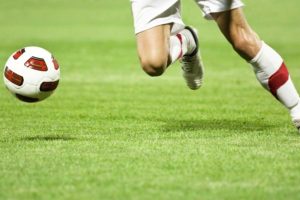
One such type of injury that is very much common among football players is the Anterior Cruciate Ligament (ACL) injury.
Football players with ACL injuries suffer from excruciating pain and instability of their knee joints.
A successful rehab programme following ACL injury helps to return to play confidently.
Here’s what Nikki has to say regarding her customised ACL rehab programme with Jazz Alessi.
“Working with a trainer who listens to your needs and goals at the start and then follows that all the way through without going off tangent was exactly what I wanted (and what I explained in our initial consultation) and this was delivered with 100% focus and dedication.”
We’ll be discussing this type of injury in details, its relation to football and the importance of ACL rehab thoroughly in this article.
Let’s dive into this topic.
Why are ACL injuries common among footballers?
As we discussed in the beginning, football requires a variety of movements of your legs, and that’s why considerable stress is placed on your knee joint and its supporting ligaments.
The major ligaments supporting your knee joint are:
- Anterior Cruciate Ligament (ACL),
- Posterior Cruciate Ligament (PCL),
- Medial Collateral Ligament (MCL), and
- Lateral Collateral Ligament (LCL).
Out of these ligaments, ACL injuries are the most prevalent injuries in football and occur because of contact or non-contact mechanisms. (1)
If we look at the list of footballers with ACL injury, some familiar names include:
- Zlatan Ibrahimovic (2017),
- Xavi (2005),
- Alan Shearer (1992),
- Ruud van Nistelrooy (2000),
- Robert Pires (2002), and
- Roy Keane (1997).
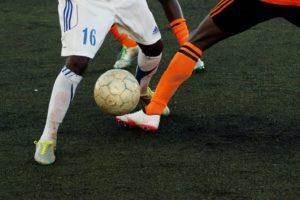
This game that you and I love the most consists of 90 minutes, and hence there is a massive amount of strain and pressure on the mechanics of your knees.
You’ll better understand it if you think about how often players make sudden sprints, twists and turns while playing football.
Although football shoes or studs are designed for maximum support and to ensure that players don’t slip, this is also the reason behind most ACL injuries.
- The studs do their job and keep the players from falling over, but did you know that research shows this transmits the force to your knee joint where ACL injury occurs? (2)
This does not mean that this is the only causative factor in football players with ACL injuries.
This is just one of the numbers of responsible factors.
Some Interesting Facts You Should Know
Do you want to know some interesting facts related to footballers with ACL injury?
The most common situational patterns among footballers with ACL injury are as follows. (3)
- Pressing or tackling
- Being tackled
- Regaining balance after kicking
- Landing from a jump
Another interesting fact is that ACL injuries are more prevalent at the start of the match than at the end.
This is most probably because the players are full of energy when a game starts, and they make more swift movements in the first half of the match compared to the second behalf.
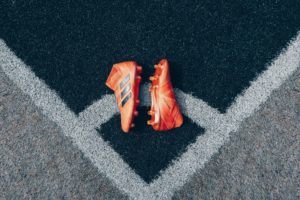
This is Aaron Cadette experienced regarding his ACL reconstruction rehab programme:
“My ACL knee injury rehabilitation program was fully customised. Any exercise I couldn’t perform was changed. When I started, I had no flexibility, balance and I felt lots of pain in my knee.
Once I started training with Jazz, I immediately felt a big improvement.
I also saw an increased in strength, flexibility, body coordination, exercise flow and I could do more exercises then as I could when I started. As time went on the pain dramatically reduced.
I 100% recommend Jazz Alessi ACL injury rehabilitation services.”
- Have you recently suffered from such an incident and ruptured your ACL?
- Are you struggling with pain, and it is getting difficult to return to your usual game?
Book a FREE ONLINE CONSULTATION now with Jazz Alessi to discover how to return to playing football and the number of steps that can be taken to ace your recovery.
ACL Injury – How it affects a footballer’s performance?
We both know that when a supporting structure of our body part is damaged, its stability is compromised.
That’s what happens to a football player’s knee joint when their ACL is injured/ruptured.
If you have somehow injured your ACL, the first and foremost complaint would be unbearable pain.
Though pain is a protective mechanism in our body, you cannot give your best if you are struggling with knee pain in the most important joint of a football player i.e., Knee joint.
Even if you are so passionate about this game that you do not care about this excruciating pain, the subsequent drastic effect an ACL injury has is the instability of your knee joint.
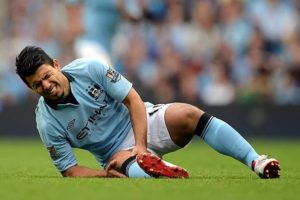
You may start feeling that your knee is getting out of place during running.
You may start losing confidence while landing from the jump.
Other symptoms that may accompany ACL injury are:
- clicking and popping sensation in the knee joint,
- swelling and
- altered joint’s mechanics.
These problems may persist even after ACL reconstruction surgery if you do not undergo ACL reconstruction rehab for some weeks.
A laser-sharp ACL reconstruction rehab is necessary if you want to achieve the finest outcomes of your ACL surgery and avoid knee reinjury.
We are all different.
This cannot be achieved by just performing ACL rehab exercises learnt from the internet.
To learn how to safely return to play football without getting re-injured again and safe exercises to perform for your successful ACL reconstruction rehab, you can book a FREE ONLINE CONSULTATION with Jazz Alessi by clicking here.
Ronaldo and his Knee Injury in Euro 2016
One of the top players in football history, Cristiano Ronaldo, suffered from an ACL injury during the final match of Euro 2016 that was being played between Portugal and France.
- Do you remember that he was injured in a collision with Dimitri Payet in the game’s ninth minute?
- Ronaldo kept playing in discomfort before falling to the ground again in tears in the 17th minute.
- He then left the pitch for more treatment, but he was seen jogging back into the action to jeers from the home crowd after three minutes.
But unfortunately, he couldn’t continue playing due to severe knee pain.
He finally left the field in the 25th minute of the game.
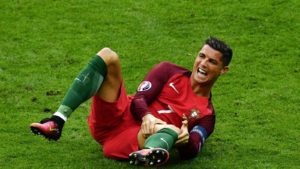
Though this ligament injury kept him off the field for some weeks, he finally recovered, and he was again seen on the field sprinting and showing his master class to the world.
I’m of the view that when even a world class football player cannot prevent himself from injuries, how can we?
- Yes, we can decrease the chances of injury, but could we completely eliminate the knee injury risks?
- The best course of action is to manage the injury effectively with the help of a highly qualified professional (just like Ronaldo did).
He was provided with the best medical and rehabilitation services, and that’s why he returned to this lovely sport in a short time.
- If you are also looking for top-quality rehabilitation services for your injured ACL, you can book a FREE ONLINE CONSULTATION now with Jazz Alessi and let him help you achieve your goals.
How to Cope an ACL injury if you are a footballer?
Now, when you already know what an ACL injury is, why it is so common, and what are the signs and symptoms of this injury, let’s discuss what you should do if you have an ACL injury on and off the field.
Suppose you suspect an ACL injury based on the information provided above.
In that case, you should first confirm the grade of your ACL injury.
Immediately after an ACL injury football player should leave the field and seek help from a qualified professional.
But…
Did you know that there are three grades of an ACL injury? (4)
- Grade 1: Microscopic damage to ACL.
- Grade 2: Macroscopic tear of ACL (but the ligament is not completely torn).
- Grade 3: Complete rupture of ACL (the ligament is broken into two parts).
Based on long term medical research published in the best medical journals, working with the best physios in the country and my experience of more than 20 years in this field, grade 1 ACL injury football players suffer from (and some grade 2 injuries) can be successfully managed non-operatively.
However, grade 3 tears of the ACL always require surgery.
During the acute phase (immediately after the injury) of ACL injury football players should follow PRICE protocol. (5)
- Protect your knee.
- Rest: Do not put stress on your injured ligament.
- Icing: Apply ice around the knee.
- Compression: Apply compression to the knee joint by wrapping or bandages.
- Elevation: Elevate your knee joint above the heart level.
The next step for your safe return to the game is the individualised rehabilitation programme focusing on your body’s weaknesses, individualities and capabilities.
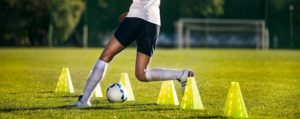
We all know that the ACL rehabilitation programme consists of different ACL rehab exercises, but elite personal trainers in London qualified in rehab (rehab trainers) – based on your laser sharp assessment – will know which ACL rehab exercises to include and which exercises to exclude in each rehabilitation phase.
The exercises that are safe to perform in return to the play phase of rehabilitation might not be safe in the first phase.
If you, like other football players, want to know about the safe and unsafe exercises following ACL injury and how to avoid the ACL tear football players have suffered in the past, you can ask about them directly from me and that too for FREE.
Book your FREE ONLINE CONSULTATION now.
Why is Customised ACL rehab crucial for football players?
Football is a thrilling and dynamic game that requires lots of energy, and that is why ACL tear football players have been increasing day by day.
If a player is off the field for some weeks, returning to this game might seem a problem for them.
These are the clients’ concerns who are involved in competitive games such as football, marathon, rugby etc.
- You know very well that we cannot compare the performance of Neymar Junior to that of Cristiano Ronaldo.
- Both have their own class.
- Their strengths and techniques are different.
- Their body segments, composition, body postures preferences, muscles power, compensatory mechanisms and endurance would be different too.
- Though both are top football players, still they are different from each other.
So how can the rehabilitation programmes of two different players with ACL injuries be the same?
That’s why REHAB CUSTOMISATION is important.
The skill that a defender must possess is different from a player with the role of centre forward.
- As you will learn in this article I emphasise rehab customisation at expert level.
- A laser sharp knee rehab customisation is the most important aspect of any type of knee injury rehabilitation training.
Which is the reason why number of clients involved in competitive sports seek my professional services and they say that I am one of the best personal trainers in London.
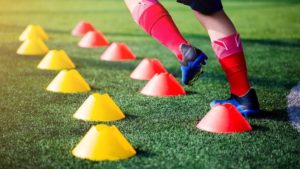
The point I’m trying to make here is that you cannot rehabilitate your ACL injury by simply following some exercises you came across on the internet everyone does, in fact you will risk a knee reinjury.
Or by visiting an ordinary personal trainer who does not know from the inside out the value of ACL rehab customisation.
If you live in greater London and you want to return to football, not with the same previous energy but even greater than that, you must seek a qualified and long-term experienced rehab personal trainer In London.
- Do you still have questions about the importance of customisation?
Clear your doubts now by booking a FREE ONLINE CONSULTATION with Jazz Alessi.
8 Golden ACL Tips from an Elite Personal Trainer
Rehabilitation is a single word, but actually, it is an art.
An art Jazz Alessi is a master of.
He has trained many professional clients having ACL injuries, and that’s why his expertise is unmatched in this area.
Here are some of the golden tips from Jazz Alessi that will help you to avoid ACL tear football players struggle with.
- Always complete a full body proper warm up before the game whilst also go specific. This helps both to relax your muscles and increase blood flow to your lower body.
- During pivoting or turning, crouch and bend your hips and knees. This helps to reduce the stress on your ACL and hence decreases the risks of ACL injury.
- Practice jumping and landing techniques during your training. Focus on your knee biomechanics when you land.
- Incorporate balance training into your routine. Most football players focus on strength and endurance training and forget this most important component of training. Faulty balance can increase the risks of ACL injury among football players.
- Wear proper footwear. No one can understand the importance of proper footwear better than a football player. Choose your footwear wisely and make sure that they are comfortable and stable.
- Keep your body fully hydrated.
- Reach your peak physical condition safely and train in balance.
- Maximise your core and don’t ignore your upper body strength.
Here’s what Ramona has to say regarding her ACL knee injury rehabilitation programme with Jazz Alessi.
“I’ve never met someone so meticulous and dedicated in his field. He understands that each body reacts and recovers differently from knee surgery and every time we trained, he made exercise and movement adjustments on the spot depending on my limitations on the day.”
Who is Jazz Alessi?
I know that it was a bit long article, but I hope that was informative.
Perhaps that is the reason you are still reading it.
We’ll conclude this article by giving a brief intro to Jazz Alessi.
A person who is going to change your narrative of practicalities regarding knee injury rehabilitation in the coming days!
- What would you call a person who is determined to give his entire effort to bring out the best of his clients?
- A person who is so dedicated to his field that his clients’ goals do not let him rest until he helps achieve them.
A person who is empathetic towards his clients and knows the art of listening?
Whatever the title you give to such a person, it will never be enough.
That person I am talking about is Jazz Alessi.
- He is an elite personal trainer in London with more than 20 years of experience in this field.
- Jazz has trained athletes participating in Olympics, marathon runners, MMA and UFC fighters, football and tennis players, bankers, and the list goes on.
- He is also a 2nd generation Pilates instructor.
- Besides these specialties, Jazz also holds a certification in Nutrition and his expertise is highly sought by some of the best organisations in UK, like CMS Cameron Mckenna and LSE.
He is much more than just one of the best elite personal trainer in London.
Why not discuss your goals with him directly and set on a journey of achieving them?
Keen to get started?
- Book your FREE ONLINE CONSULTATION
REFERENCES
- Saw R, Finch CF, Samra D, Baquie P, Cardoso T, Hope D, et al. Injuries in Australian rules football: an overview of injury rates, patterns, and mechanisms across all levels of play. Sports Health. 2018;10(3):208-16.
- Bennett HJ, Brock E, Brosnan JT, Sorochan JC, Zhang S. Effects of two football stud types on knee and ankle kinetics of single-leg land-cut and 180 cut movements on infilled synthetic turf. Journal of applied biomechanics. 2015;31(5):309-17.
- Della Villa F, Buckthorpe M, Grassi A, Nabiuzzi A, Tosarelli F, Zaffagnini S, et al. Systematic video analysis of ACL injuries in professional male football (soccer): injury mechanisms, situational patterns and biomechanics study on 134 consecutive cases. British journal of sports medicine. 2020;54(23):1423-32.
- Kisner C, Colby LA, Borstad J. Therapeutic exercise: foundations and techniques: Fa Davis; 2017.
- Bleakley CM, Davison G. Management of acute soft tissue injury using protection rest ice compression and elevation: recommendations from the Association of Chartered Physiotherapists in sports and exercise medicine (ACPSM)[executive summary]. Association of Chartered Physiotherapists in Sports and Exercise Medicine. 2010:1-24.



